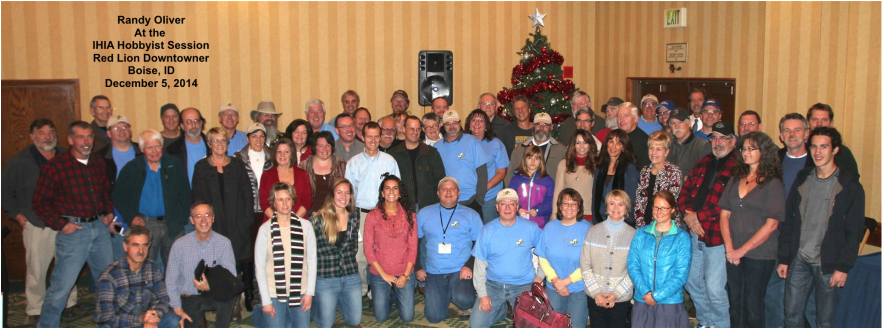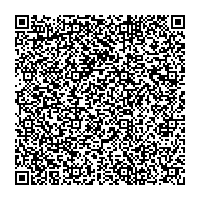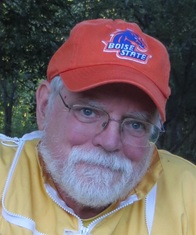Randy Oliver spent an entire afternoon speaking to a contingent of hobbyists and sideliners in Boise, ID, on December 5, 2014.
The Treasure Valley Beekeepers Club organized the event and extends a sincere "Thank You!" to those who helped make this event a rousing success, including the Idaho Honey Industry Association, Alyce and Brad Elsberg with Association Management Group, Mobray Brown at the Red Lion Downtowner Hotel, and all the TVBC volunteers, who contributed their time and energy help bring this exciting event to Boise.
The Treasure Valley Beekeepers Club organized the event and extends a sincere "Thank You!" to those who helped make this event a rousing success, including the Idaho Honey Industry Association, Alyce and Brad Elsberg with Association Management Group, Mobray Brown at the Red Lion Downtowner Hotel, and all the TVBC volunteers, who contributed their time and energy help bring this exciting event to Boise.
Welcome All Beekeeping Enthusiasts
Welcome to the Treasure Valley Beekeepers Club of Idaho.
The Treasure Valley Beekeepers Club provides a great opportunity for everyone with an interest in bees to come & gather great resources and knowledge about the honeybee. Practical knowledge, workshops and demonstrations are provided throughout the year. At every meeting, we discuss important bee topics, along with a Q & A with experienced beekeepers. Everyone is welcome! To become a club member, come to any meeting to sign up. Dues are $10.00/yr or $15.00 for a family/yr. If you can't make our next meeting; you can download, print, fill out and mail in our registration form. The mailing address is located on the form.
Forms submitted in December apply for the remainder of 2014 and all of 2015 (That's like ONE EXTRA MONTH FREE! How can you beat a deal like that? Buy two memberships and save double!
The Treasure Valley Beekeepers Club provides a great opportunity for everyone with an interest in bees to come & gather great resources and knowledge about the honeybee. Practical knowledge, workshops and demonstrations are provided throughout the year. At every meeting, we discuss important bee topics, along with a Q & A with experienced beekeepers. Everyone is welcome! To become a club member, come to any meeting to sign up. Dues are $10.00/yr or $15.00 for a family/yr. If you can't make our next meeting; you can download, print, fill out and mail in our registration form. The mailing address is located on the form.
Forms submitted in December apply for the remainder of 2014 and all of 2015 (That's like ONE EXTRA MONTH FREE! How can you beat a deal like that? Buy two memberships and save double!
| 2015_tvbc_registration_form.pdf |

The Hobbyist Session with Randy Oliver on December 5, will take the place of our December 2014 meeting. Regular Meetings will resume at the IOA Hall on January 20, 2015; We meet the third Tuesday of most every month (unless we have a field trip) at 6:30 pm in Boise at: IOA Hall 401 Brazil St. (off Sunrise Rim) Boise Please bring your own drinks. Map Foothills Learning CenterThe TVBC has partnered with the Foothills Learning Center to provide educational opportunities about the Apis Mellifera (honey bees) for the public. We have a beeyard on the grounds used for the Honey Bee Apprentice Program taught each year for new beekeepers. Please visit their website for all classes available at the Foothills Learning Center

Join Us On Facebook
CONTACT US
YOUR TVBC OFFICERS
President/Chief Drone – Chad Dickinson
[email protected] Vice-President – Doug Cleveland [email protected] Treasurer/Keeper of the Envelope – Dick Knapp [email protected] Worker Bee/Secretary – Claire Opperman [email protected] Past President – Jeff Bergland [email protected] Committee Positions: Volunteers (no vote necessary) Web Queen Chair – MJ Oresik [email protected] Social Activities Chair – Karla Kimball [email protected] (aka "The Party Bee," In charge of club activities, like barbecues, honey tastings, etc.) Community Education Chair - Mac McNeil [email protected] (Plans Club education - Bug Days, Western Idaho Fair, etc.) |
Check Out Pictures of Kim Flottum's Trip to Idaho as He Helped Us Celebrate National Honey Bee Day.
Upcoming ClassesPlease see our Education page.
Need Hive Components Fast?
Mike Morrison has a list of equipment that you can purchase locally and avoid shipping charges. Please see the following list for what he has available and his contact info:
What Should a Beekeeper be doing now?November and December
These are two months to enjoy the lack of bee work. That being said, I will still make you think that there is a lot to do by what I write below: 1. For us in the Northwest, excessive moisture in our hives is one of our biggest concerns. Make sure lids are watertight, that hives are tilted so water drains out and away, and that there is sufficient ventilation. This is even more important in January, when brood rearing and metabolism increase hive moisture. 2. At this time the bees are clustered together in dormancy, except for those periodic warm spells that allow the bees to break their cluster, move closer to stored honey, and make those all important cleansing (defecating) flights. 3. These periodic warm spells afford the opportunity to visually assess the health of our hives and to do emergency manipulations, if necessary. As a rule, never open a hive during the winter unless there is a good reason and the temperature is at least 45°F. Work around the cluster rather than through it. 4. Take note of the colonies that are flying little or not at all during these periodic warm spells. Do a cursory check for weight (lift the hive to assess) and to determine whether or not the hive is alive (place your ear against the wall, thump it with your hand, and listen for the buzz). 5. For hives low on stores, feed fondant or frames of honey, or possibly retire the colony. Do not feed syrup at this time. Bees cannot remove the extra moisture, and too much water in the bees diet in conjunction with confinement leads to dysentery. 6. An ideal way to feed fondant is to use lids with rims and to pour the fondant directly into the void. These lids can have up to 5 pounds of feed and last 2-3 weeks. 7. Drivert has been discussed as an alternative to regular fondant (or dry sugar) on the OSBA Message Board. Drivert has existed for at least 30 years as a potential alternative for emergency feed. It is composed of 92% finely pulverized sucrose along with 8% invert sugar. According to C&H, drivert is "a dry fondant sugar used in icings and pan-coated confections." 8. For dead-outs, determine why the hive succumbed (usually queenlessness) and make sure frames are free of scale from American foulbrood. Shake out the dead bees. Then, clean and return the equipment to storage. 9. Check your apiary occasionally - especially after a wind storm. Make sure that the lids are secure and verify that animals (e.g., mice, cattle, deer, and humans) have not been bothering (e.g., chewing, eating, or vandalizing) the hives. 10. Consider placing your order for queens now. Demand for queens has increased during the last few years. 11. Give honey and/or candles to family, friends, farmers, and growers for the season and holidays. The above information was excerpted from the Oregon State Beekeepers Association webpage, found at: http://www.orsba.org/htdocs/home.php (June 2, 2012). The Treasure Valley Beekeepers Club extends a special thanks to Todd Balsiger, Forest Grove, OR for permission to post this information. | ||
Last Updated: 01/01/15



